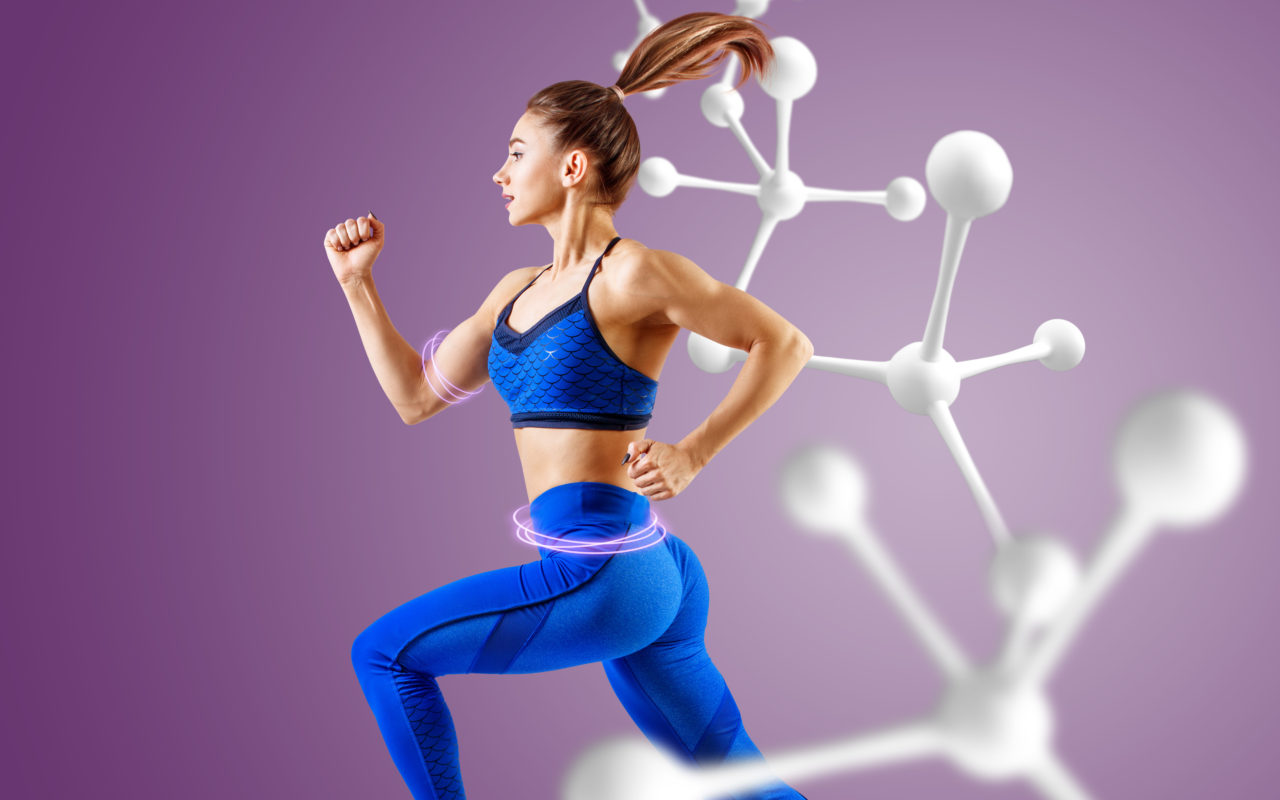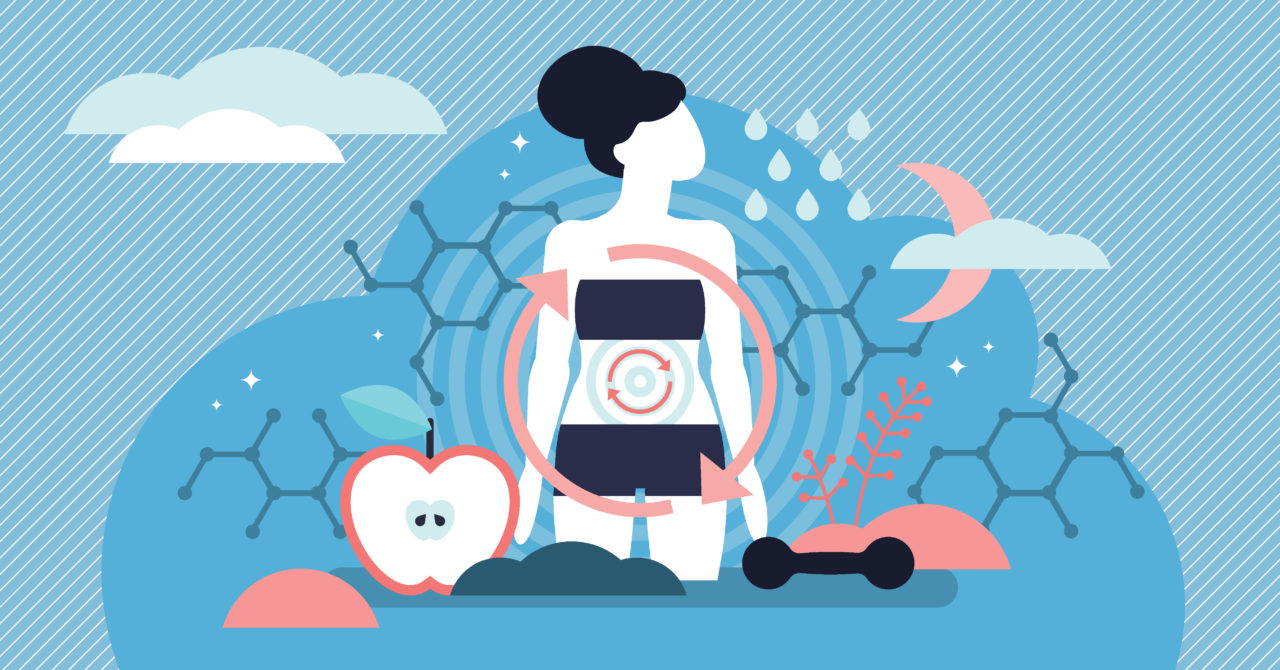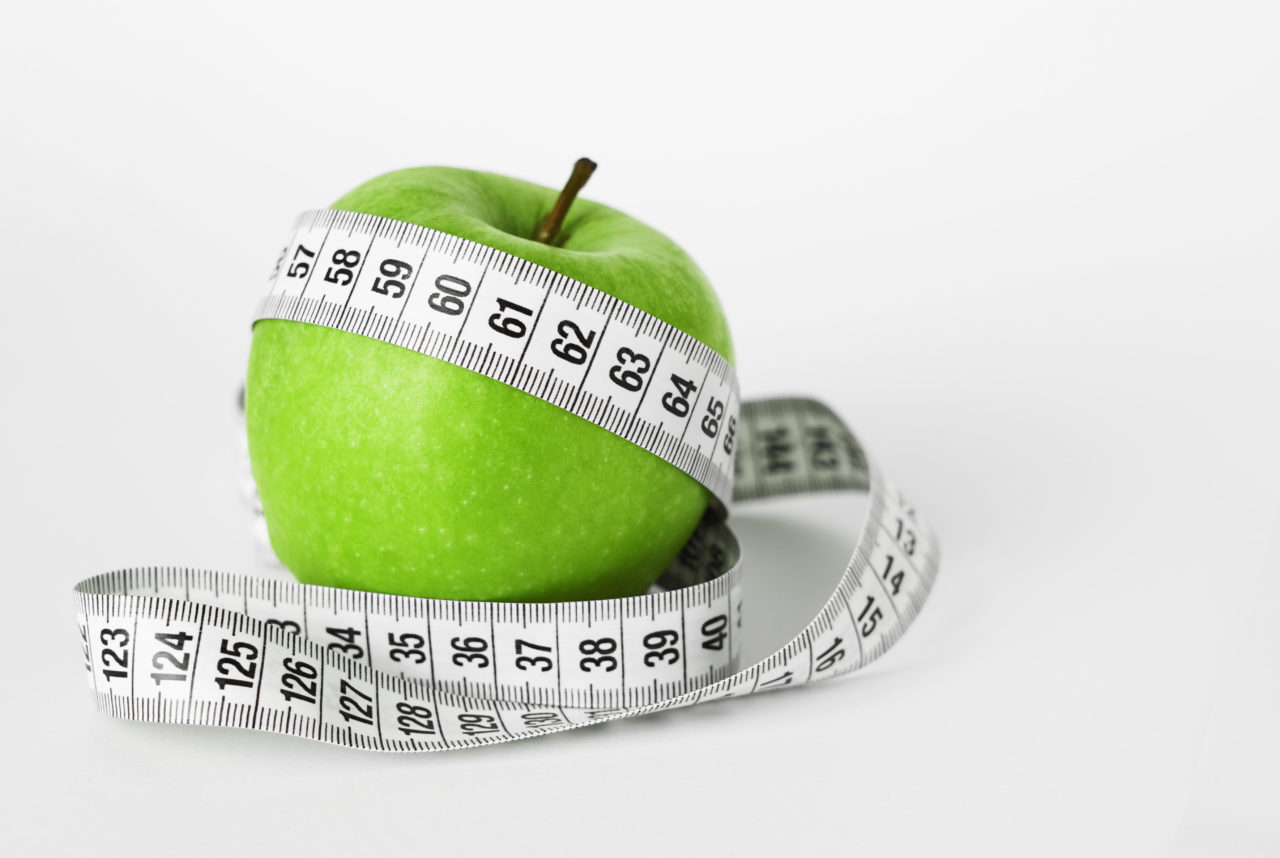When we talk about metabolism, many people only think of fat burning, dieting or weight gain. But metabolism is much more than that.

The term metabolism is used to summarise all the processes that take place in our cells. The most important tasks of the metabolism are the absorption of nutrients and the elimination of toxins. In the course of the metabolism, energy is obtained from the absorbed nutrients, which is then made available to the cells.
Energy metabolism
The entirety of metabolic pathways that serve to provide the cell with energy is summarised as energy metabolism. The human body obtains energy from plant and animal foods. In order for this energy to be utilised, the body must first release the energy from the nutrients and then convert it into mechanical energy - muscle work. The body needs energy for the basic functions of life support (e.g. heartbeat, breathing, digestion, brain activity), to maintain body temperature and for physical activity.

Anabolism and catabolism
The terms anabolism and catabolism are also used in connection with metabolism. Both are phases of metabolism, i.e. the metabolism.
Catabolism is the totality of metabolic pathways in which large molecules (such as polysaccharides, lipids, nucleic acids and proteins) are broken down into smaller units (such as monosaccharides, fatty acids, nucleotides or amino acids). These are either oxidised to release energy or used in other anabolic reactions. Catabolism provides the chemical energy necessary for the maintenance and growth of cells.
Anabolism is the synthesis of substances in living organisms. Anabolism is the process by which the body uses the energy released by catabolism to synthesise complex molecules. Anabolic metabolic pathways in a cell lead to the formation of larger, more complex molecules from smaller molecules. Initially, catabolic pathways are needed to break down the nutrient molecules from food into smaller building blocks. These smaller molecules are then assembled into other, larger molecules, the macromolecules.
During anabolism, energy is supplied that is needed to form chemical bonds between smaller molecules and to produce macromolecules. The molecules produced during anabolism are then used to build structures in the cell or even to build new cells.
Catabolic and anabolic reactions are always linked in metabolic processes, but do not occur simultaneously. Catabolism and anabolism are regulated with the help of enzymes and end products. The enzymes and end products activate or deactivate the catabolic or anabolic metabolic pathway.

The main sources of energy in food are:
- Sugar (carbohydrates)
- Fat (lipids)
- Protein (proteins)
When food is burnt, oxygen is consumed and carbon dioxide is released. As the body produces and consumes energy at different times, it needs to store energy. The long-term energy stores are located in fatty tissue.
A distinction is made between different types of metabolism:
- Sugar metabolism (carbohydrate metabolism): The complex carbohydrates from food are broken down into simple sugars such as glucose or fructose. Our body gains energy from this.
- Protein metabolism (amino acid metabolism): Proteins are broken down into amino acids. These enter the bloodstream and are used to generate energy and build muscle cells, hormones and enzymes.
- Fat metabolism: Fat is required for energy production in the cells and for the formation of hormones and messenger substances. Fat is also our most important energy store for "bad times".
- Mineral metabolism: This is where, for example, calcium, which is important for muscle function, is provided, as well as calcium and phosphorus for bone formation.
Sources: https://innonature.eu/blogs/innonature-health-news; https://www.spektrum.de/lexikon/biologie-kompakt/stoffwechsel/; https://studyflix.de/biologie/stoffwechsel-5737